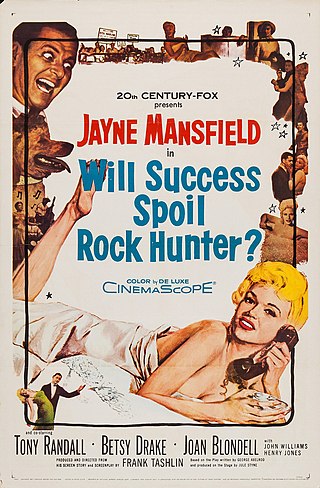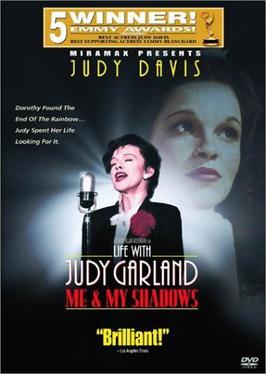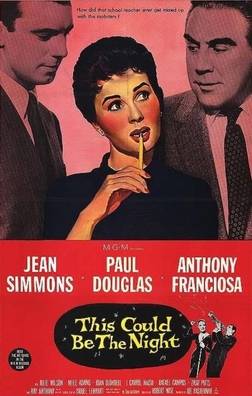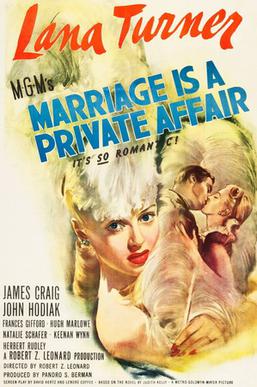
The Broadway Melody, also known as The Broadway Melody of 1929, is a 1929 American pre-Code musical film and the first sound film to win an Academy Award for Best Picture. It was one of the first musicals to feature a Technicolor sequence, which sparked the trend of color being used in a flurry of musicals that would hit the screens in 1929–1930. Today, the Technicolor sequence survives only in black and white. The film was the first musical released by Metro-Goldwyn-Mayer and was Hollywood's first all-talking musical.

Will Success Spoil Rock Hunter? is a 1957 American satirical comedy film starring Jayne Mansfield and Tony Randall, with Betsy Drake, Joan Blondell, John Williams, Henry Jones, Lili Gentle, and Mickey Hargitay, and with a cameo by Groucho Marx. The film is a satire on popular fan culture, Hollywood hype, and the advertising industry, which was profiting from commercials on the relatively new medium of television. It also takes aim at the reduction television caused to the size of movie theater audiences in the 1950s. The film was known as Oh! For a Man! in the United Kingdom.

Lana Turner was an American actress. Over the course of her nearly 50-year career, she achieved fame as both a pin-up model and a film actress, as well as for her highly publicized personal life. In the mid-1940s, she was one of the highest-paid actresses in the United States, and one of Metro-Goldwyn-Mayer's (MGM) biggest stars, with her films earning more than $50 million for the studio during her 18-year contract with them. Turner is frequently cited as a popular culture icon of Hollywood glamour and a screen legend of classical Hollywood cinema.

Joan Blondell was an American actress who performed in film and television for 50 years.

Nightmare Alley is a 1947 American film noir directed by Edmund Goulding from a screenplay by Jules Furthman. Based on William Lindsay Gresham's 1946 novel of the same name, it stars Tyrone Power, with Joan Blondell, Coleen Gray, and Helen Walker in supporting roles. Power, wishing to expand beyond the romantic and swashbuckler roles that brought him to fame, requested 20th Century Fox's studio chief Darryl F. Zanuck to buy the rights to the novel so he could star as the unsavory lead "The Great Stanton", a scheming carnival barker.

Mary Elizabeth Hughes was an American film, television, and stage actress best known for her roles in B movies.

Till The Clouds Roll By is a 1946 American Technicolor musical film produced by Metro-Goldwyn-Mayer. A fictionalized biopic of composer Jerome Kern, portrayed by Robert Walker, Kern was originally involved with the production, but died before its completion. Featuring an ensemble cast of well-known musical stars, it was the first in a series of MGM biopics about Broadway composers.

Lady Be Good is an MGM musical film released in 1941. The film stars dancer Eleanor Powell, along with Ann Sothern, Robert Young, Lionel Barrymore, and Red Skelton. It was directed by Norman Z. McLeod and produced by Arthur Freed. This was the first of several films Powell made with Skelton. Powell received top billing, but Sothern and Young are the main stars. They play, respectively, Dixie Donegan, a would-be lyricist and Eddie Crane, a struggling composer.

Life with Judy Garland: Me and My Shadows is a 2001 American two-part, four-hour biographical television miniseries based on the 1998 book Me and My Shadows: A Family Memoir written by Lorna Luft, the daughter of legendary singer-actress Judy Garland. The miniseries was directed by Robert Allan Ackerman and originally broadcast in two parts on ABC on February 25 and 26, 2001.

Good News is a 1947 Metro-Goldwyn-Mayer musical film based on the 1927 stage production of the same name. It starred June Allyson, Peter Lawford, Mel Tormé, and Joan McCracken. The screenplay by Betty Comden and Adolph Green was directed by Charles Walters in Technicolor.

Paid is a 1930 American pre-Code drama film starring Joan Crawford, Robert Armstrong, and Kent Douglass in a story about a wrongly accused ex-convict who seeks revenge on those who sent her to prison using a scam called the "Heart Balm Racket".

Cry 'Havoc' is a 1943 American war drama film, produced by Metro-Goldwyn-Mayer and directed by Richard Thorpe. It stars Margaret Sullavan, Ann Sothern and Joan Blondell, and features Fay Bainter, Marsha Hunt, Ella Raines, Frances Gifford, Diana Lewis, Heather Angel, Dorothy Morris and Connie Gilchrist.

The Shopworn Angel is a 1938 American drama film directed by H. C. Potter and starring James Stewart, Margaret Sullavan, and Walter Pidgeon. The MGM release featured the second screen pairing of Margaret Sullavan and James Stewart following their successful teaming in the Universal Pictures production Next Time We Love two years earlier.

This Could Be the Night is a 1957 MGM comedy-drama film directed by Robert Wise and starring Jean Simmons and Paul Douglas. Anthony Franciosa made his debut in the film, which is based on the short stories by Cornelia Baird Gross.

The musical short can be traced back to the earliest days of sound films.

Gloria Blondell was a stage, film, and television actress who was the younger sister of actress Joan Blondell.

Miss Pacific Fleet is a 1935 American comedy film directed by Ray Enright. The film stars Joan Blondell, Glenda Farrell, and Hugh Herbert. The film was based on the short story of the same name by Frederick Hazlitt Brennan in the Collier's magazine. It was released by Warner Bros. on December 14, 1935. Two stranded showgirls in California enter a beauty contest "Miss Pacific Fleet" to win the fare back home to New York City.

Rich Man, Poor Girl is a 1938 American comedy film directed by Reinhold Schünzel and starring Robert Young, Ruth Hussey and Lew Ayres. The film is a remake of the 1929 film The Idle Rich. This was Lana Turner's second appearance as an MGM star.

Marriage is a Private Affair is a 1944 war-comedy film, directed by Robert Z. Leonard, based on novel Marriage Is a Private Affair (1941) by Judith Kelly. It stars Lana Turner, Frances Gifford and James Craig.
Stars Over Broadway is a 1935 American musical film directed by William Keighley, written by Jerry Wald, Julius J. Epstein, & Pat C. Flick, and starring Pat O'Brien, Jane Froman, James Melton, Jean Muir, Frank McHugh, and Eddie Conrad. It was released by Warner Bros. on November 23, 1935.

















